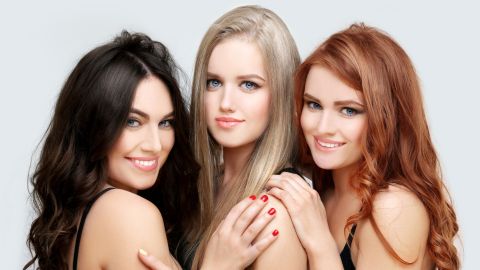There are a variety of factors that can contribute to hair density and risk of hair loss. Some of these factors are expected such as medical conditions like thyroid issues and diabetes whereas others are quite surprising. A human on average born with 100,000 hair follicles across their entire scalp. This can vary significantly based on a person’s natural hair color.
In this blog, we'll dive deep into the world of hair colors to reveal which hair color has the most strands per square inch. We'll explore the fascinating world of hair density and strand counts. By the end, you'll know which popular shade typically has the highest density and thickness.
Did you know that natural hair color can make certain individuals more prone to hair loss?
What Is Hair Density and How Is It Measured?
Hair density refers to how thick or thin your hair appears on your scalp. It's determined by the number of hair follicles you have in a given area. The more hair follicles packed into that area, the denser your hair looks and feels.
To get a rough idea of your hair density at home, you can use a handheld mirror then count how many individual hairs you see across that line. Do this in a few different areas to get an average number. Higher numbers mean greater density.
Another method is to look at hair shedding. Healthy shedding is normal, but excessive shedding could signal lower density. After brushing or washing your hair, check how many hair strands are left behind. Large amounts likely mean your hair is less dense or thinning in areas. Keep in mind that density can vary for many reasons, like age, genetics, overall health, and natural hair color.
Learn More: Why Are Some of My Hairs Thicker in Some Areas?
3 Most Common Hair Colors and Their Density

Hair color is a unique and fascinating aspect of our appearance. It comes in various shades, but three hair colors are particularly common: blonde, black, and red. Let's explore these three most common hair colors and their density.
1. Blonde or Brown Hair
Blonde hair is known for its light and pale yellow color, and interestingly, it tends to have the highest hair density. Individuals with blonde hair often have a greater number of hair strands on their scalp compared to other hair colors. Brown hair or blonde hair has the highest hair count, boasting a total of 140,000 hair follicles across the entire scalp.
2. Black Hair
Black hair is known for being very dense and thick. Its strands tend to be coarser and more tightly packed together, which gives it an amazing fullness. With so many strands crammed into a small area, black hair often appears voluminous. Averaging 108,000 pieces of hair, dark hair is the most common type of natural hair.
3. Red Hair
Red hair is on the opposite end of the spectrum from black hair. While stunning, red strands are typically the thinnest and most sparse. People with natural red hair often have the lowest strand counts. With an estimated 90,000 fewer hairs per square inch, red hair is typically known to have the lowest strand count.
Hair count is something that is determined before a human is ever born. If you are born with only 90,000 hair follicles, it’s more likely for you to notice hair loss. On the other hand, if you’re on the higher end, your hair loss is less likely to be severe and noticeable.
Does Darker Hair Look Thicker?
Natural hair color is also known to have different textures that can contribute to the visibility of hair loss. Dark hair is often more coarse than blonde hair, making it appear thicker in nature, even if there are fewer follicles. There is a bit of a visual illusion at play. Darker hair shades absorb more light, creating the perception of thickness. Additionally, darker hair colors often have more pigmentation, making individual strands appear more substantial.
A Medical Mystery
There is very little science behind the levels of hair density as it relates to natural human hair color. Although hair count has been proven, research is still unable to determine with certainty why total hair count varies between dark, red and blonde hair colors.
Natural human hair color is a predetermined trait that humans have no control over. Based on the color hair a person is born with, they may be more likely to have hair loss that is visible. They could also be fortunate to have thicker hair that can help mask hair damage.
What Science Can Do to Prevent Hair Loss?
What research can determine with certainty is that laser phototherapy can help prevent hair loss. It can even promote hair growth! That's because it rejuvenates hair at the deepest part of the hair follicle. That's why Theradome, an at-home laser hair therapy device, can help you achieve fuller, more luxurious hair no matter what your hair color.
This is because Theradome’s photo laser therapy helmet focuses on the scalp, not on the hair color. So no matter what type of color or hair a person has, Theradome will work!
Theradome users have even reported that wearing the helmet right after a hair color treatment prolongs and preserves their hair color. This is likely because the laser light stimulates keratin production. This closes the hair shaft cuticles, which the chemical hair dye process leaves open.
Implementing Theradome’s advanced laser phototherapy technology into your hair regimen CAN slow down hair loss. No matter your hair color or goal, Theradome is a proven solution that defeats hair loss.
Ready to embrace a future with fuller, luscious locks? Choose Theradome's laser hair growth helmet and redefine your hair journey. Take action now and unleash the potential of your hair!






















